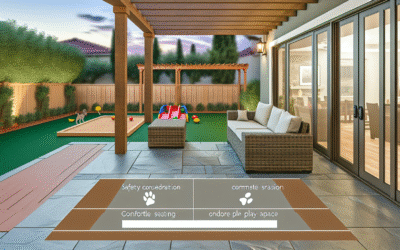
In a world increasingly dominated by screens and sedentary lifestyles, finding accessible, impactful ways to boost our well-being is more crucial than ever. Enter the garden. Often dismissed as just a hobby, gardening as a wellness activity offers a profound and holistic pathway to enhanced mental, physical, and emotional health. It’s not just about growing plants; it’s about nurturing ourselves, reconnecting with nature, and finding peace in the simple act of creation. From the soothing rhythm of planting seeds to the joyous harvest, the garden provides a unique therapeutic space where stress melts away and vitality blossoms.
This comprehensive guide dives deep into why and how tending to a garden can become your most powerful wellness tool. We’ll explore the science behind its therapeutic effects, reveal the hidden physical benefits, unpack its psychological advantages, and provide practical, actionable steps for you to cultivate your own green sanctuary, no matter your space or experience level. Prepare to unearth a richer, more vibrant version of yourself through the power of horticulture.
What you’ll discover in this article:
- The scientific evidence supporting gardening’s health benefits.
- Practical strategies to incorporate gardening into your wellness routine.
- Creative solutions for gardening in small spaces or challenging environments.
- Tips for maintaining your garden and your own well-being simultaneously.
- How to use gardening to foster community and connection.
The Unseen Power of Green: Scientific Evidence for Gardening’s Wellness Benefits
It’s not just a feeling; the positive impact of gardening as a wellness activity is backed by a growing body of scientific research. Neuroscientists, psychologists, and medical professionals are increasingly recognizing the therapeutic potential of working with soil and plants. Let’s unearth some of the compelling evidence.
Dirt and Dopamine: The Microbiome-Mood Connection
Surprising as it may sound, the very act of digging in the dirt can lift your spirits. Research has identified a harmless bacterium found in soil, Mycobacterium vaccae, which acts a lot like an antidepressant. When inhaled or ingested (naturally, while gardening), this microbe can stimulate serotonin production in the brain. Serotonin is a key neurotransmitter responsible for feelings of happiness, calm, and overall well-being.
This isn’t just anecdotal evidence. Studies published in reputable journals have shown that exposure to M. vaccae can reduce anxiety-related behaviors and improve cognitive function. So, when you’re getting your hands dirty, you’re quite literally infusing your brain with natural mood boosters. This unique bio-connection underscores why gardening as a wellness activity feels so inherently good.
Cortisol Control: Reducing Stress Hormones Naturally
Chronic stress is a pervasive issue in modern life. It elevates cortisol levels, leading to a cascade of negative health outcomes, including weight gain, weakened immunity, and increased anxiety. The good news? Gardening offers a powerful antidote. A study published in the *Journal of Health Psychology* found that gardening significantly reduced cortisol levels and restored a positive mood more effectively than reading.
The gentle, repetitive nature of gardening tasks—weeding, watering, pruning—encourages a meditative state. This mindfulness helps to quiet the incessant chatter of the mind, allowing the body to relax and stress hormones to diminish. It’s a tangible, hands-on form of active relaxation that delivers measurable physiological benefits.
Cognitive Enhancement: Sharpening Your Mind in the Garden
Beyond mood, gardening as a wellness activity also offers significant cognitive advantages. Planning a garden layout, learning about different plant needs, troubleshooting problems, and recalling planting schedules all engage various parts of the brain. This mental stimulation can improve memory, problem-solving skills, and attention span. For older adults, gardening has even been associated with a reduced risk of dementia, highlighting its neuroprotective properties.
Furthermore, the sensory richness of a garden—the smell of fresh earth, the sight of vibrant blooms, the feel of rough bark—engages multiple senses, enhancing sensory processing and overall brain health. It’s an immersive experience that keeps your mind agile and engaged.
Expert Perspective: Dr. R. T. Taylor, a horticultural therapist, notes, “Gardening offers a unique blend of physical engagement, mental stimulation, and sensory experience that few other activities can rival. It’s truly a holistic prescription for well-being.”
Beyond the Blooms: The Physical Health Benefits of Cultivating Your Greenspace
While the psychological benefits are profound, let’s not overlook the robust physical advantages of embracing gardening as a wellness activity. It’s an accessible, enjoyable form of exercise that often doesn’t feel like a workout, yet delivers impressive results for your body.
A Full-Body Workout in Disguise
Think about the movements involved in gardening: digging, raking, weeding, lifting soil bags, carrying water. These aren’t just chores; they’re functional movements that engage multiple muscle groups. You’re bending, stretching, squatting, and reaching, all of which contribute to improved flexibility, strength, and endurance.
Calorie Burn Comparison: Gardening vs. Other Activities
- Gardening (moderate): 200-400 calories/hour
- Brisk Walking: 250-350 calories/hour
- Light Cycling: 300-500 calories/hour
- Swimming (leisurely): 200-300 calories/hour
Regular gardening can contribute significantly to meeting the recommended 150 minutes of moderate-intensity exercise per week. It can also enhance cardiovascular health by getting your heart rate up in a sustained, low-impact manner.
Vitamin D: Nature’s Sunshine Supplement
Spending time outdoors, a natural prerequisite for most gardening, means exposure to sunlight. This exposure is vital for the body’s synthesis of Vitamin D, a crucial nutrient for bone health, immune function, and mood regulation. Many people are Vitamin D deficient, and gardening as a wellness activity provides a delightful way to boost your levels naturally.
Just 10-15 minutes of direct sun exposure (without sunscreen) a few times a week can be enough for many individuals. Always remember to practice sun safety with longer periods of exposure, especially during peak hours.
Improved Dexterity and Fine Motor Skills
From handling delicate seedlings to tying up climbing plants, gardening requires precision and coordination. These tasks help maintain and improve fine motor skills and dexterity, which are particularly beneficial for older individuals or those recovering from injury. The tactile experience also stimulates neural pathways, keeping hands and minds connected.
Better Sleep: The Exhausting, Energizing Cycle
Physical activity, exposure to natural light, and reduced stress levels all contribute to better sleep quality. After a satisfying day in the garden, you’re likely to fall asleep more easily and experience deeper, more restorative sleep. This improved sleep then fuels your energy for the next day, creating a positive wellness cycle.
The Green Prescription: Cultivating Emotional Well-being and Mindfulness
Beyond the scientific and physical, gardening as a wellness activity holds immense power for our emotional landscape. It’s a space for introspection, growth, and connection, offering a unique form of therapy through nature.
Mindfulness in Every Leaf and Stem
“Mindfulness” is a buzzword, but in the garden, it becomes a natural state. When you’re transplanting a seedling, carefully checking for pests, or enjoying the scent of a blooming rose, you are fully present. The repetitive, focused nature of many gardening tasks draws attention away from worries and toward the immediate sensory experience. This practice of being in the “now” is a cornerstone of stress reduction and emotional regulation.
- Sensory Engagement: The smell of damp earth after rain, the feel of textured leaves, the vibrant colors of flowers, the sound of buzzing bees.
- Patience and Observation: Watching a seed sprout, a bud unfurl, or a fruit mature teaches patience and keen observation skills.
- Acceptance: Not every plant thrives, not every harvest is bountiful. Gardening teaches us to accept what is beyond our control and find beauty in imperfection.
A Sense of Purpose and Accomplishment
For many, particularly those struggling with depression or a loss of direction, the garden offers a clear, tangible sense of purpose. Caring for living things, watching them grow under your nurturing touch, and eventually harvesting the fruits (or vegetables) of your labor provides immense satisfaction. This feeling of accomplishment can significantly boost self-esteem and provide a positive feedback loop for continued engagement in gardening as a wellness activity.
Case Study: Evelyn, a 68-year-old retiree, struggled with feelings of aimlessness after her husband passed. She joined a community garden. “Suddenly, I had a daily reason to get up, go outside, and tend to something,” she explains. “Seeing my tomatoes ripen, sharing my basil, it gave me a purpose again. I feel useful, connected, and genuinely happy.”
Connection to Nature: Biophilia and Beyond
Humans have an innate tendency to connect with nature, a concept known as biophilia. Urbanization often severs this connection, leading to “nature deficit disorder.” Gardening provides a direct, hands-on way to re-establish this vital link. It allows us to observe life cycles, understand ecological relationships, and feel part of something larger than ourselves. This connection fosters a sense of peace, reduces feelings of isolation, and promotes environmental stewardship – all crucial aspects of holistic well-being.
Therapeutic Horticulture: A Growing Discipline
So potent is the emotional impact of gardening that it has spawned a recognized therapeutic discipline: horticultural therapy. Qualified horticultural therapists use plants and gardening activities to achieve specific therapeutic goals for clients with physical, cognitive, or emotional challenges. This professional recognition further validates gardening as a wellness activity for everyday life.
Getting Started: Your Journey to a Therapeutic Garden (No Green Thumb Required!)
Feeling inspired but unsure where to begin? You don’t need acres of land or a horticulture degree to embark on your gardening for wellness journey. The key is to start small, be patient, and enjoy the process. Here’s a practical guide to cultivating your green sanctuary.
1. Assess Your Space and Sunlight
This is the foundational step. How much direct sunlight does your potential garden spot receive each day? Most vegetables and many flowering plants require at least 6 hours of direct sun. Herbs and some leafy greens can tolerate 3-4 hours.
- Sunny Spot (6+ hours): Ideal for most vegetables (tomatoes, peppers, beans), sun-loving flowers (marigolds, sunflowers).
- Part Sun (3-6 hours): Good for some herbs (mint, cilantro), leafy greens (lettuce, spinach), and shade-tolerant flowers (impatiens, fuchsias).
- Shade (less than 3 hours): Focus on foliage plants (ferns, hostas), mosses, or truly shade-loving herbs like sorrel.
Even a sunny windowsill can be a prime spot for a small herb garden or microgreens, embracing gardening as a wellness activity even in urban dwellings.
2. Choose Your Gardening Style
Your space and preferences will dictate your style:
- Container Gardening: Perfect for balconies, patios, windowsills, or small yards. Use pots, grow bags, or repurposed containers. Excellent for beginners.
- Raised Beds: Offers better drainage, easier access (less bending), and allows for custom soil mixes. Great for vegetables and flowers.
- In-Ground Garden: Requires more preparation (soil amendment, digging) but can expand significantly. Best for larger spaces.
- Vertical Gardening: Maximizes space by growing upwards. Ideal for herbs, strawberries, or leafy greens on walls or trellises.
- Community Garden Plot: A fantastic option if you lack personal space. Provides shared resources and social interaction.
3. Start Simple: Easy-to-Grow Plants for Beginners
Don’t overwhelm yourself. Begin with plants known for their resilience and forgiving nature. Success builds confidence!
Beginner-Friendly Edibles:
- Herbs: Basil, mint, chives, rosemary, thyme (many thrive in pots).
- Leafy Greens: Lettuce, spinach, kale (can often be harvested multiple times).
- Radishes: Quick growth, satisfying results.
- Cherry Tomatoes: Many varieties do well in containers.
- Bush Beans: Relatively low maintenance.
Beginner-Friendly Flowers:
- Marigolds: Hardy, cheerful, and deter some pests.
- Zinnias: Vibrant, easy to grow from seed, and attract pollinators.
- Sunflowers: Iconic, rewarding, and relatively straightforward.
- Impatiens (for shade): Brighten up shadier spots with continuous blooms.
4. Gather Your Basic Tools
You don’t need a professional arsenal. Start with the essentials:
- Hand Trowel: For digging small holes and transplanting.
- Hand Cultivator/Weeder: For breaking up soil and removing weeds.
- Gardening Gloves: Protect your hands and keep them cleaner.
- Watering Can or Hose with a Gentle Sprayer: Consistent watering is key.
- Pruners/Snips: For harvesting and light pruning.
- Good Quality Potting Mix: Especially crucial for container gardens.
- Seeds or Starter Plants: Seeds are cheaper and offer more variety; starter plants give you a head start.
5. Learn the Basics: Water, Sun, Soil, and Feed
These are the four pillars of plant health:
- Water: Consistency is more important than quantity. Check soil moisture daily by sticking a finger in the top inch. Water when it feels dry. Avoid overwatering.
- Sun: As discussed, match plants to their light requirements.
- Soil: Good drainage and nutrients are vital. For containers, use a high-quality potting mix. For in-ground, amend heavy clay or sandy soils with compost.
- Feed (Nutrients): Plants need food. Organic compost or a balanced slow-release fertilizer can provide essential nutrients.
Remember, the goal here is not perfection, but participation. Embrace the learning curve, celebrate small victories, and let the process of gardening as a wellness activity enrich your life.
Adaptive Gardening: Making Green Space Accessible for Everyone
The beauty of gardening as a wellness activity is its adaptability. No matter your physical limitations, urban living constraints, or time pressures, there are creative ways to engage with plants and reap the therapeutic rewards.
Gardening for Limited Mobility or Physical Challenges
Accessibility is key. Adjusting your garden to your needs ensures sustained enjoyment:
- Raised Beds and Vertical Gardens: Elevate planting areas to waist height or higher to minimize bending, kneeling, and stooping. Vertical planters reduce the need for floor space and allow for eye-level gardening.
- Container Gardening: Pots can be placed on benches or wheeled carts, allowing you to garden from a seated position. Choose lightweight containers for easy movement.
- Adaptive Tools: Invest in ergonomic tools designed for comfort and reduced strain. Examples include long-handled tools with foam grips, kneeling pads, rolling garden seats, and tools with arm supports.
- Pathways and Layout: Ensure paths are wide enough for wheelchairs or walkers and free from obstacles. Design your garden layout for easy reach, placing frequently tended plants closest to seating areas.
- Automated Watering Systems: Drip irrigation or self-watering containers can reduce the physical demands of watering.
Urban Gardening Solutions: Maximizing Small Spaces
City living often means limited outdoor space, but it doesn’t preclude the benefits of gardening as a wellness activity. Think creatively:
- Balcony and Patio Gardens: Utilize every inch! Hang baskets, stack planters, use railing planters, and cultivate dwarf varieties of vegetables and fruits.
- Windowsill Gardens: Ideal for herbs, microgreens, and small flowers. Ensure adequate light.
- Indoor Gardens with Grow Lights: If natural light is scarce, full-spectrum LED grow lights allow you to cultivate almost anything indoors, year-round. This is especially good for herbs, lettuce, and even small fruiting plants.
- Community Gardens: Many cities offer plots for rent. This is a fantastic way to access larger spaces, share knowledge, and foster community connections.
- Terrariums and Mini Ecosystems: For the ultimate small space solution, create a closed ecosystem in a glass container. It’s low maintenance and offers a fascinating miniature natural world to observe.
Time-Saving Gardening Hacks
Even busy schedules can accommodate gardening as a wellness activity with smart planning:
- Choose Low-Maintenance Plants: Opt for native plants that are adapted to your local climate and require less watering and pest control. Succulents and many perennial flowers are also great choices.
- Mulch, Mulch, Mulch: A layer of mulch (wood chips, straw, shredded leaves) suppresses weeds, retains soil moisture, and reduces the need for frequent watering and weeding.
- Self-Watering Planters: These ingenious pots have a reservoir that gradually feeds water to the plant roots, significantly extending the time between waterings.
- Focus on a Few Favorites: Instead of trying to grow everything, concentrate on plants you genuinely love or consume frequently. A small, vibrant herb garden on your kitchen counter can be just as impactful for wellness as a large vegetable patch.
- Gardening in “Chunks”: Don’t feel pressured to dedicate hours at a time. Fifteen minutes of weeding here, twenty minutes of watering there – even short bursts of activity contribute to well-being.
Every small effort in the garden adds up, contributing to your physical and mental well-being in meaningful ways. The key is to find what works for you and make it an enjoyable, sustainable part of your life.
Harvesting Health: Integrating Garden Bounty into Your Wellness Routine
The magic of gardening as a wellness activity extends far beyond the soil. When your plants begin to yield their gifts, you unlock a fresh dimension of health benefits: direct access to nutritious, homegrown food and a deeper connection to what sustains you.
Nutritional Powerhouse at Your Fingertips
Growing your own food offers unparalleled nutritional advantages:
- Peak Freshness, Peak Nutrients: Harvested produce often loses nutrients rapidly after picking. When you pick a ripe tomato from your garden, it’s at its nutritional prime, bursting with vitamins, minerals, and antioxidants that are often diminished in store-bought counterparts.
- Control Over Your Food: You dictate what goes into your garden. No pesticides, no harmful chemicals unless you choose them. This reduces your exposure to toxins and ensures cleaner, healthier food for your family.
- Variety and Discovery: Gardens encourage experimentation. You might discover heirloom varieties of vegetables with unique flavors or grow exotic herbs that are hard to find in stores, expanding your culinary horizons and nutrient intake.
- Encourages Healthier Eating: Having fresh, delicious produce readily available naturally nudges you towards making healthier food choices. When you’ve put in the effort to grow it, you’re more likely to enjoy and appreciate it.
Comparison: Store-Bought vs. Homegrown Produce
| Factor | Store-Bought | Homegrown |
|---|---|---|
| Nutrient Density | Can be diminished due to transport & storage | Optimal, harvested at peak ripeness |
| Pesticides/Chemicals | Often present unless organic certified | Full control over inputs (organic optional) |
| Freshness & Taste | Varies; sometimes picked unripe for transport | Exceptional; eaten shortly after harvest |
| Cost per serving | Variable, can be high for organic | Initial setup cost, then very low |
The Joy of Cooking and Sharing
The act of preparing a meal with ingredients you’ve grown fosters a unique connection to your food. It transforms cooking from a chore into a creative, satisfying endeavor. Sharing your garden’s bounty with friends, family, or neighbors further enhances the social and emotional rewards of gardening as a wellness activity. It’s a fundamental human act of care and generosity.
Preserving Your Harvest: Extending the Wellness
Beyond immediate consumption, preserving your garden’s harvest extends its wellness benefits throughout the year. Freezing, canning, drying, or fermenting allows you to enjoy nutritious, homegrown food even when the garden is dormant.
- Freezing: Blanch and freeze vegetables like green beans, corn, or kale.
- Drying: Dehydrate herbs, fruits (apples, berries), or even tomatoes for later use.
- Canning: Preserve jams, jellies, pickles, or tomato sauces. (Ensure proper canning techniques for safety).
- Fermenting: Make sauerkraut, kimchi, or pickled vegetables for gut-healthy probiotics.
These preservation methods are not only practical but can also become soothing, meditative activities in themselves, extending the mindfulness fostered by gardening into the kitchen.
Community and Connection: Shared Wellness Through Green Spaces
While often a solitary pursuit, gardening as a wellness activity also offers powerful avenues for community building and fostering social connections. These interactions are crucial components of holistic health, combating loneliness and strengthening support networks.
The Community Garden Phenomenon
Community gardens are vibrant hubs where individuals come together to cultivate plots, share knowledge, and build relationships. They are particularly beneficial for urban dwellers without private outdoor space, but also for anyone seeking camaraderie.
- Shared Expertise: New gardeners can learn from seasoned veterans, sharing tips on pest control, plant varieties, and soil amendment.
- Social Interaction: Working alongside others naturally leads to conversations, friendships, and a sense of belonging. This regular social engagement is a critical buffer against loneliness and isolation.
- Resource Sharing: Tools, water access, and even surplus harvests are often shared, creating a sustainable and supportive environment.
- Intergenerational Connections: Community gardens often bring together people of all ages, allowing for the exchange of wisdom and energy across generations.
Participating in a community garden exemplifies how gardening as a wellness activity can extend its benefits beyond the individual plot, nourishing the social fabric of a neighborhood.
Neighborhood Beautification and Environmental Stewardship
When you tend to your front yard, plant flowers in a public space, or participate in a tree-planting initiative, you contribute to neighborhood beautification. This not only enhances property values but also creates a more pleasant and inviting environment for everyone. Green spaces reduce urban heat island effects, improve air quality, and provide habitats for local wildlife.
This sense of collective responsibility and positive impact on your surroundings can be deeply fulfilling, fostering pride and connection to your community. It elevates gardening as a wellness activity to a civic contribution.
Teaching and Learning: Passing on Green Wisdom
Gardening is an endless learning journey. Whether you are teaching a child how to plant a seed, sharing your bumper crop of zucchinis with a neighbor, or volunteering with a school garden program, you are participating in a cycle of knowledge exchange. This act of teaching and mentoring reinforces your own understanding and provides immense satisfaction.
Similarly, being open to learning from others – from an experienced gardener at the local nursery to an online gardening forum – enriches your experience and expands your skill set. This continuous learning contributes to cognitive wellness and keeps the mind engaged.
Gardening Clubs and Online Communities
Beyond physical community gardens, online forums, social media groups, and local gardening clubs offer virtual and in-person spaces for enthusiasts to connect. These platforms are excellent for troubleshooting, sharing photos of successes and failures, and finding local advice. Building these connections, even digitally, supports the social dimension of gardening as a wellness activity.
Advanced Strategies for Deepening Your Gardening Wellness Journey
Once you’ve established your basic gardening routine, you may wish to explore methods that further amplify the wellness benefits, delving deeper into sustainable practices and holistic approaches.
Embracing Organic and Permaculture Principles
Moving beyond conventional gardening methods into organic and permaculture practices can profoundly enhance your connection to nature and your personal well-being.
- Organic Gardening: Focuses on nourishing the soil, not just the plants. This involves using compost, natural fertilizers, and biological pest control (beneficial insects) instead of synthetic chemicals. It’s better for your health, the environment, and creates a more robust, living ecosystem in your garden.
- Permaculture: (<a href=”https://permies.com/f/33/permaculture” rel=”nofollow noopener” target=”_blank”>Learn more about Permaculture principles</a>) This design philosophy emphasizes creating sustainable, self-sufficient ecosystems that work with nature, not against it. Think companion planting, water harvesting, and building perennial food forests. It’s a holistic approach that deepens your understanding of ecological systems and can be incredibly rewarding.
Adopting these principles turns gardening as a wellness activity into an act of environmental stewardship, promoting a sense of responsibility and connection to the wider natural world.
Companion Planting and Biodiversity
Instead of monocultures, embrace biodiversity. Companion planting involves growing different plant species together for mutual benefit, such as pest deterrence, attracting beneficial insects, or improving soil quality. For example, marigolds can deter nematodes, and nasturtiums can act as a trap crop for aphids.
Creating a diverse garden ecosystem reduces reliance on external interventions and fosters a balanced environment. Observing these intricate relationships within your garden adds another layer to the mindfulness aspect of gardening. It’s a living lesson in interconnectedness.
Mindful Harvesting and Seed Saving
The act of harvesting can be incredibly meditative. Approach it mindfully, appreciating the abundance and connecting with the plants you’ve nurtured. Instead of just pulling, take a moment to observe the plant, thank it, and consider its lifecycle.
Seed saving is another powerful practice. By collecting seeds from your most successful plants, you become part of the age-old tradition of preserving genetic diversity and adapting plants to your specific microclimate. It’s a frugal, sustainable, and deeply satisfying way to close the loop on your gardening efforts. (<a href=”https://www.seedsavers.org/blog” rel=”nofollow noopener” target=”_blank”>Explore seed saving techniques</a>)
Integrating Sensory Elements for Enhanced Therapy
Design your garden with all five senses in mind to amplify its therapeutic potential:
- Sound: Incorporate wind chimes, attract birds with feeders, or add a small water feature for soothing trickling sounds.
- Scent: Plant fragrant herbs (lavender, mint, rosemary), scented roses, or jasmine near seating areas.
- Touch: Include plants with varied textures – fuzzy lamb’s ear, smooth hosta leaves, rough barks.
- Sight: Plan for continuous bloom through the seasons, use contrasting colors, and consider architectural elements.
- Taste: The ultimate harvest! Acknowledge the satisfaction of fresh, homegrown food.
By intentionally engaging all senses, you create a richer, more immersive experience that truly elevates gardening as a wellness activity into a sanctuary for the self.
Journaling Your Garden Journey for Reflection
Keep a garden journal. Document planting dates, weather observations, successes, failures, and even your emotional responses to the garden. This practice encourages reflection, helps you learn from your experiences, and provides a tangible record of your journey. It reinforces the mindfulness aspect and allows you to track your growth, both in the garden and within yourself.
Sustaining Your Green Habits: Long-Term Wellness
For gardening as a wellness activity to be truly effective, it needs to be sustainable. This means not just nurturing your plants but also nurturing your own enthusiasm and capacity for gardening over the long term.
Embrace Imperfection and Learn from Failure
Gardening is an inherently unpredictable endeavor. Pests will appear, plants will sometimes fail, and harvests might disappoint. Don’t let these setbacks derail your wellness efforts. Instead, view them as learning opportunities. What went wrong? What can be done differently next time? This mindset fosters resilience and problem-solving skills, crucial for overall well-being.
Acknowledge that even experienced gardeners face challenges. The “natural imperfections” of gardening mirror the imperfections of life, teaching us acceptance and adaptation.
Listen to Your Body and Your Garden
Don’t push yourself to exhaustion. If a particular gardening task feels too strenuous, break it into smaller parts or seek help. Use ergonomic tools and take regular breaks. Your garden should be a source of rejuvenation, not depletion.
Similarly, learn to listen to your plants. Wilting leaves, discoloration, or pest damage are all signals. Becoming attuned to these subtle cues deepens your connection to the living world and empowers you to be a more effective caretaker, reinforcing your role in gardening as a wellness activity.
Seasonal Awareness and Winter Wellness
Gardening is deeply tied to the seasons. Embrace the natural ebb and flow. During active growing seasons, revel in the energy of growth and harvest. During quieter winter months, shift your focus. Plan next year’s garden, study seed catalogs, propagate houseplants, or delve into indoor microgreens. These activities keep your green spirit alive even when outdoor gardening pauses, ensuring continuous engagement with gardening as a wellness activity.
Connecting with the seasons promotes a natural rhythm in your life, providing a grounding perspective in a fast-paced world.
Share Your Journey: Inspire Others
Talk about your gardening experiences with friends, family, and online communities. Share your successes, commiserate over challenges, and offer advice. By sharing your journey, you not only reinforce your own commitment but also potentially inspire others to discover the profound benefits of gardening as a wellness activity. This act of sharing creates a ripple effect of well-being.
Celebrate Milestones, Big and Small
Did your first seed sprout? Did your tomato plant produce fruit? Did your basil thrive? Celebrate these moments! Acknowledge the effort you put in and the beauty you’ve created. These small celebrations provide positive reinforcement and fuel your enthusiasm for continuing your wellness journey through gardening.
The garden, much like our lives, is a continuous process of growth, change, and renewal. By embracing its lessons and rhythms, we cultivate not just plants, but a more resilient, mindful, and joyful self. Gardening as a wellness activity is a journey, not a destination, offering endless opportunities for growth and profound peace.
FAQs About Gardening As A Wellness Activity
What are the scientific benefits of gardening for mental health?
Scientific research shows that exposure to soil bacteria (Mycobacterium vaccae) can increase serotonin levels, acting as an antidepressant. Gardening reduces cortisol (stress hormone) and improves mood, focus, and cognitive function. The meditative aspect of tending plants also promotes mindfulness and reduces anxiety, making gardening an effective wellness activity.
How does gardening contribute to physical fitness?
Gardening engages various muscle groups through bending, lifting, digging, and raking, providing a full-body workout. It can burn 200-400 calories per hour, improving cardiovascular health, strength, and flexibility. Regular outdoor gardening also increases Vitamin D synthesis, crucial for bone health and immune function.
Can gardening help with stress and anxiety?
Absolutely. The repetitive, mindful tasks involved in gardening, like watering or weeding, can be deeply meditative. This allows individuals to disconnect from daily stressors and focus on the present moment. Studies consistently show that spending time in green spaces, a core component of gardening, lowers perceived stress levels and reduces symptoms of anxiety and depression.
What are some accessible gardening options for beginners or those with limited mobility?
For beginners or those with limited mobility, consider raised garden beds or container gardening, which reduce bending. Vertical gardens are also space-efficient. Adaptive tools, like long-handled cultivators or kneeling pads, can make gardening more comfortable and accessible. Community gardens offer shared resources and social interaction.
How can I start gardening for wellness if I don’t have a yard?
No yard? No problem! Apartment dwellers can create thriving container gardens on balconies or patios. Indoor gardening with grow lights allows for year-round cultivation of herbs, microgreens, or small vegetables. Community gardens provide shared plots, access to tools, and a social environment for those without private outdoor space.
Is gardening an expensive hobby to start?
Gardening can be as inexpensive or as costly as you make it. You can start with basic tools, free seeds from exchanges, and repurposed containers for very little money. Investing in quality soil and some starter plants can be a bit more, but the long-term benefits and potential for homegrown food offset initial costs significantly. Focus on starting small and expanding incrementally.
What’s the best time of year to start gardening for wellness?
While spring is often associated with starting gardens, you can begin at any time! Early spring is great for cool-season crops; late spring/early summer for warm-season plants. Indoor gardening can begin year-round. The “best” time is whenever you feel ready to start and dedicate consistent (even if small) effort. The goal is to make gardening a continuous wellness activity.
Cultivate Your Inner Garden: Your Path to Lasting Well-being
We’ve traversed the rich landscape of benefits that unequivocally establish gardening as a wellness activity beyond mere pastime. From the serotonin-boosting soil microbes and cortisol-reducing effects to the vibrant physical workout it provides and the profound emotional satisfaction of nurturing life, the garden truly is a powerhouse of holistic health. It’s a place where science meets soul, where dirt transforms into delight, and where purpose blossoms from patience.
The journey into gardening for wellness doesn’t demand perfection; it simply beckons participation. Whether you start with a single herb pot on a windowsill, a vibrant container garden on your balcony, or a dedicated patch in a community garden, the act of tending to living things offers unparalleled rewards. You’re not just growing plants; you’re cultivating resilience, mindfulness, and a deeper connection to nature and yourself.
So, take that first step. Get your hands dirty. Listen to the quiet wisdom of the soil and the rustle of leaves. Allow the rhythmic process of planting, watering, and harvesting to become your personal sanctuary, your daily dose of calm, and your most rewarding form of self-care. Your garden, and your well-being, awaits its bloom.
Ready to dig deeper? Explore our related articles on <a href=”/article/mindful-living-through-nature”>Mindful Living Through Nature</a> and <a href=”/article/benefits-of-community-gardens”>The Healing Power of Community Gardens</a> to continue your journey towards a more grounded and joyful life.
Content Disclaimer
The information provided in this article is for general informational and educational purposes only, and is not a substitute for professional medical or mental health advice. Always seek the advice of your physician or other qualified health provider with any questions you may have regarding a medical condition or mental health concerns. While gardening offers numerous wellness benefits, it should not replace professional care for diagnosed health conditions. Always exercise caution and proper safety measures when engaging in physical activities like gardening.
Categories
- Accent Walls & Ceilings (61)
- Art Curation & Gallery (62)
- Bedding Style Trends (68)
- Bedroom Makeover (81)
- Bohemian & Eclectic Styles (58)
- DIY & Budget-Friendly Decor (64)
- Eco-Friendly Design (62)
- Furniture Care (71)
- Home Decor & Design Ideas (162)
- Home Wellness Spaces (59)
- Integrated Outdoor Living (67)
- Japandi Style (61)
- Kids and Nursery Decor (59)
- Living Room Decor (79)
- Mix & Match Techniques (73)
- Modern & Contemporary Design (66)
- Rug Sizing & Placement (73)
- Scandinavian Design Inspiration (20)
- Seasonal Home Decor (79)
- Small Space Solutions (73)
- Wall Art & Painting Tips (77)
Recent Comments
Archives
Product Gallery
-
 Large Area Green Rugs for Bedroom Nordic Living Room Decoration Shaped Carpet Irregular Plush Lounge Rug Home Thick Washable Mat
Rated 5.00 out of 5$54.94 – $346.41Price range: $54.94 through $346.41
Large Area Green Rugs for Bedroom Nordic Living Room Decoration Shaped Carpet Irregular Plush Lounge Rug Home Thick Washable Mat
Rated 5.00 out of 5$54.94 – $346.41Price range: $54.94 through $346.41 -
 Nordic Style Rugs for Bedroom Morandi Living Room Decoration Carpet Large Area Geometry Lounge Rug Home Cloakroom Non-slip Mat
Rated 5.00 out of 5$39.46 – $597.66Price range: $39.46 through $597.66
Nordic Style Rugs for Bedroom Morandi Living Room Decoration Carpet Large Area Geometry Lounge Rug Home Cloakroom Non-slip Mat
Rated 5.00 out of 5$39.46 – $597.66Price range: $39.46 through $597.66 -
 Irregular Shapes Living Room Decoration Carpet Modern Style Rugs for Bedroom Home Thicken Plush Rug Fluffy Soft Lounge Floor Mat
Rated 4.83 out of 5$55.84 – $347.37Price range: $55.84 through $347.37
Irregular Shapes Living Room Decoration Carpet Modern Style Rugs for Bedroom Home Thicken Plush Rug Fluffy Soft Lounge Floor Mat
Rated 4.83 out of 5$55.84 – $347.37Price range: $55.84 through $347.37











